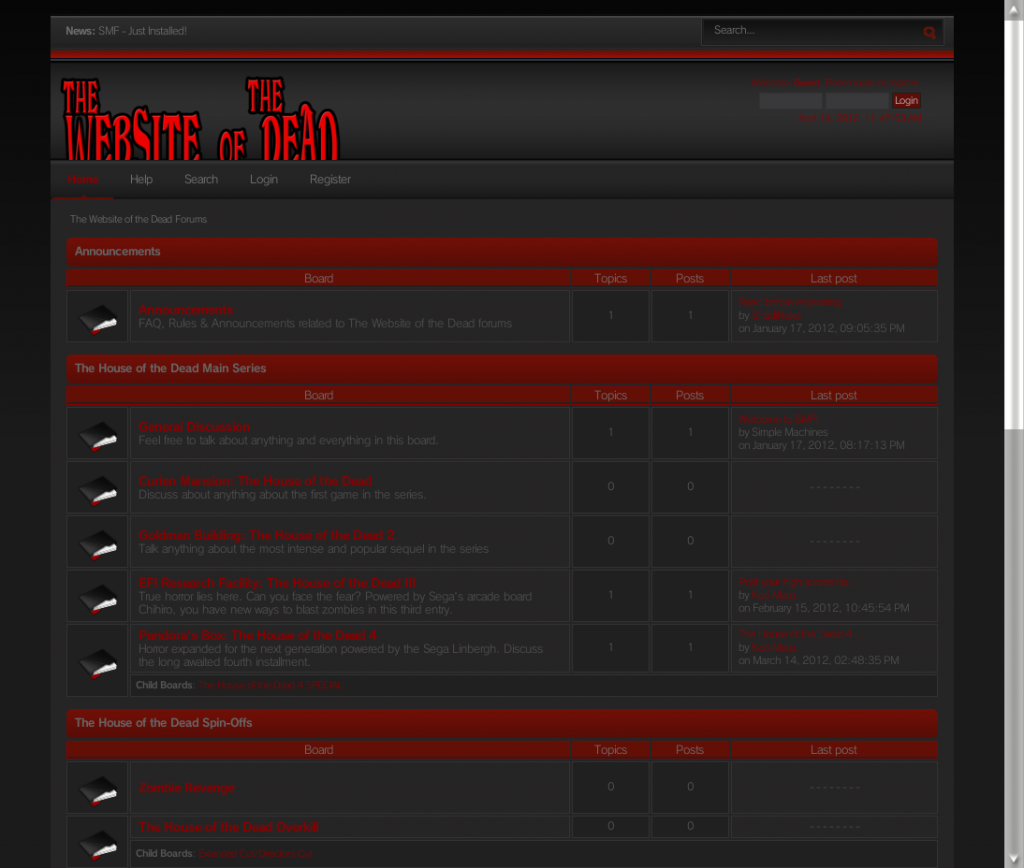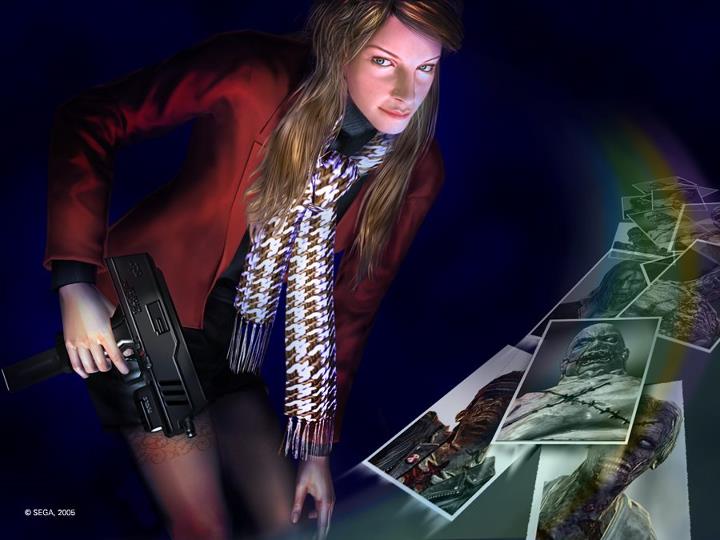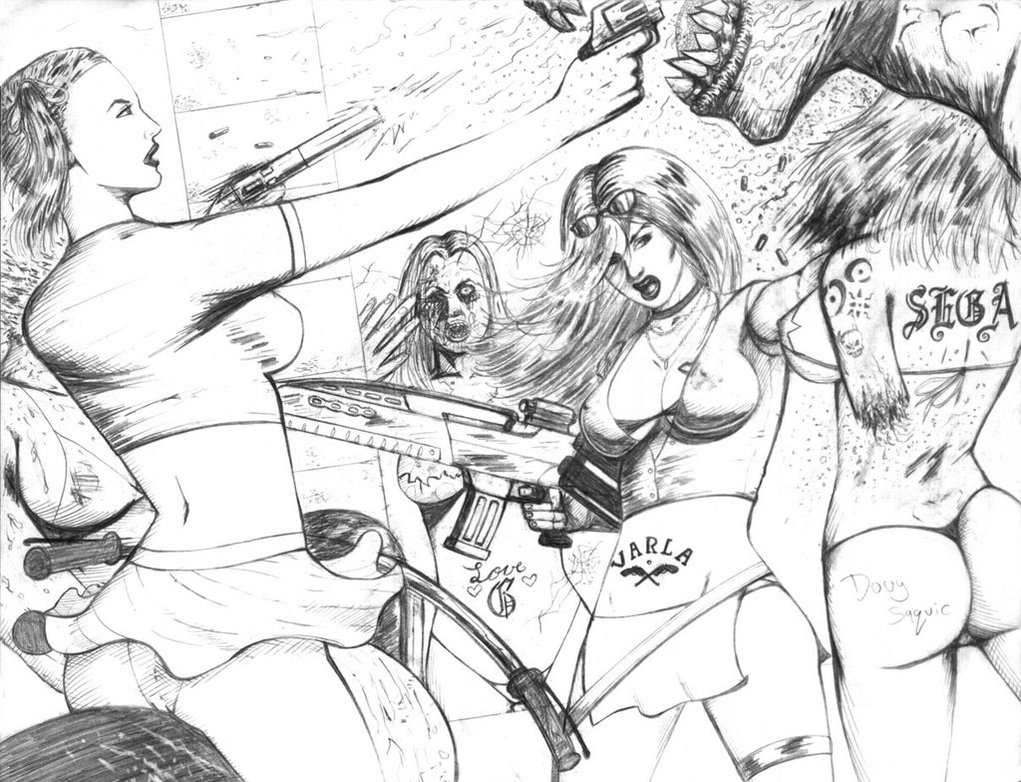This is the same guy who really gets into the House of the Dead 4 by reacting lines and movements from the game itself. Happen to find more videos of him on Youtube. If the AMS were real, he would make a perfect agent.
Category Archives: Blog
HOD Arcade History: Sega Lindbergh
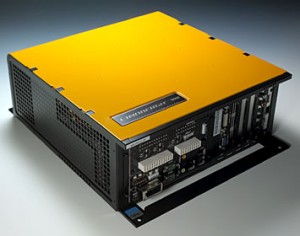
The Sega Lindbergh is an arcade platform based upon a Linux-embedded PC. Sega had originally planned to use the Microsoft’s Xbox 360 as the basis for the arcade board, but instead opted for an architecture based on standard PC hardware. This decision was probably made because it is usually more cost effective to use a PC as a gaming platform than it is to use a console.
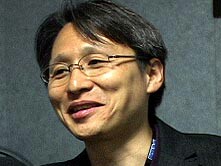
According to Sega-AM2 president Hiroshi Kataoka, porting Lindbergh titles (such as Virtua Fighter 5) to Sony’s PlayStation 3 is generally easier than porting to Xbox 360, because the Lindbergh and PS3 use a GPU designed by the same company, nVidia.
Hardware Description
CPU : Intel Pentium 4 3.0G HT (800Mhz FSB – 1MB L2 Cache)
GFX : NVIDIA GeForce 6 Series GPU
GFX Memory : 256MB (256 bit GDDR3)
OS : Montavista Linux
GFX Capabilities : Vertex Shader 3.0, Pixel Shader 3.0
Audio : 3D audio synthesizer chip onboard, possible to have 64 sounds playing simultaneously, 5.1 surround output.
Video output: One analog D-Sub, Two Digital DVI outputs.
Display : Single or dual monitor support. Can output the same picture to each monitor or different pictures on each monitor, the resolution for each of the 2 monitors can also be different.
Sound output: The two front speakers have RCA connectors, SPDIF for full surround.
Resolution : HDTV (High Definition)
RAM : 1024MB 184pin DDR SD-RAM PC3200 (2x 512MB DDR 400 sticks)
LAN : 10/100/1000 TBase Gigabit Network
Other : DVD Drive Support, USB2.0 (x4) – Sega ALL.NET online support.
Connector Format : JVS
Protection : High Spec original security module.
At E3 2005 in closed doors, Sega showcased their line up of upcoming titles of the new generation for both console and arcades. The House of the Dead 4 was among them. It was also the very first Lindbergh game to be released in the arcades.
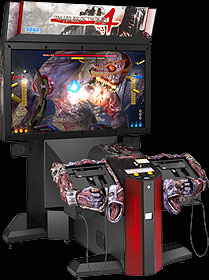
The House of the Dead 4 was the latest installment in the franchise to be displayed in High Definition and featured new types of game play mechanics by shaking your gun and a grenade button to blast away a huge group of creatures. With these unique features, the House of the Dead 4 was a big success to the fans.
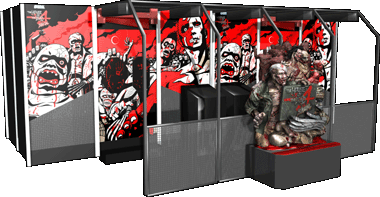
A year later, Sega made a attraction based game called The House of the Dead 4 SPECIAL. Players enter a enclosed room, sit down, and buckle up for safety reasons. The game has two 100-inch screens in front and behind the player giving the impression that enemies are attacking from all directions. The game also uses air and shakes the seats whenever a player is hit. SPECIAL takes place where 4 left off and features the return of G and a old enemy from the first game. As of now, there are no more arcade machines in the US as some are either broken and one was sold to a private collector.
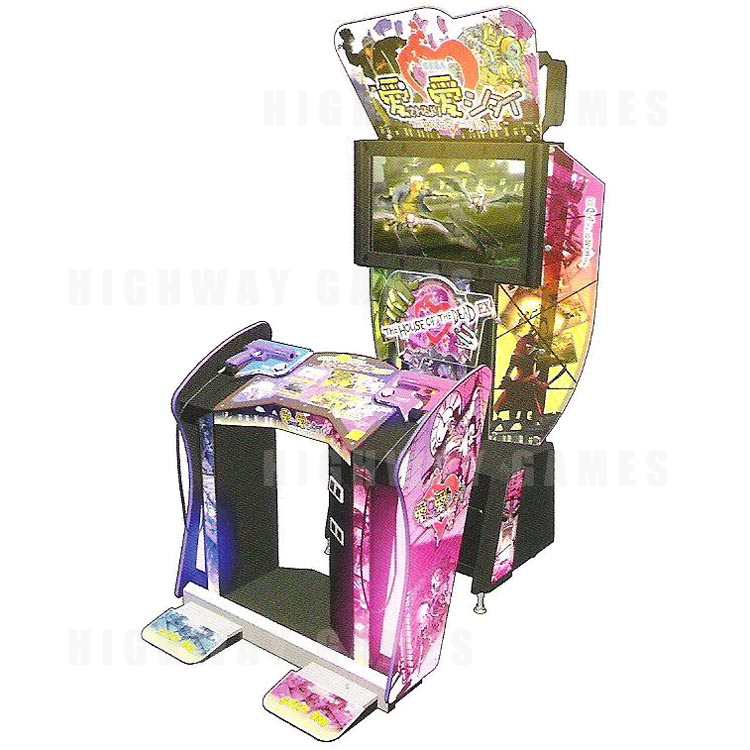
The last Lindbergh game based on HotD series was another spinoff called “Loving Deads: The House of the Dead EX” where players must play as the zombie couple, Zobio and Zobiko, to escape from Dr. Curien and his evil experiments through a series of minigames. The game makes use for both the light gun and pedals (similar to Time Crisis) in certain minigames. Shooting apples and stomping spiders. The player must reach each other hands within the time limit. What’s also awesome in the is that you get to see cameos of the characters in the series (Kate and Gary) and parodies from pop culture media (Matrix with that Bullet Time). While there’s no console port for EX yet, Zobio and Zobiko both appear as playable characters in Sumo Digital’s Sonic and SEGA All-Stars Racing.
The House of the Dead 4 is on it’s way to the PSN. Will Sega announce a new HotD game for the arcades and. Port 1 and EX to consoles. Only time will tell.
HOD Arcade History: Sega Chihiro
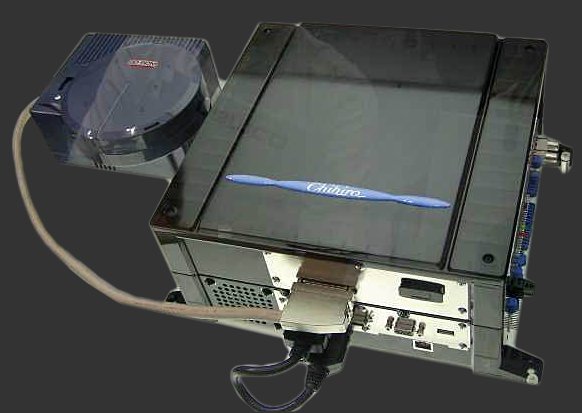
The Sega Chihiro is an arcade system produced by Sega and Microsoft in 2003. It is based upon the Microsoft Xbox, using the same Pentium III CPU and Nvidia graphics card. Unlike the Xbox however, it has upgradable RAM and uses GD-ROM media instead of DVDs. Because of the similar hardware, it is in theory relatively easy to port Chihiro games to the Xbox and PC.
Hardware Description
System : X-Box based configuration.
CPU : Intel Pentium III 733MHz (133MHz FSB)
Graphics : nVidia XChip 200MHz (based on the nVidia GeForce 3)
Sound Hardware :
1. Cirrus Logic CS4630 Stream Processor (20-bit DAC, programmable to handle 3D sound streams, 2D sound (including DLS-compatible MIDI), MP3 acceleration, Sensaura environmental effects, and other functions)
2. Other sounds may be generated by the CPU via software engines.
3. nVidia nForce (Real time Dolby Digital 5.1 encoding)
RAM : Upgradable Module, from 64MB upwards (Outrun 2 has 512MB)
Media : Sega GD-Rom
Polygons : 125M Polys/sec (Theoretical Maximum)
Rendering Speed : 4.0 G pixel/sec
Features : Programmable vertex and pixel shading, hardware Transform & Lighting engine, Quincunx FSAA, Anisotropic filtering, bump mapping, hardware lighting, particle effects, other standard 3D features).
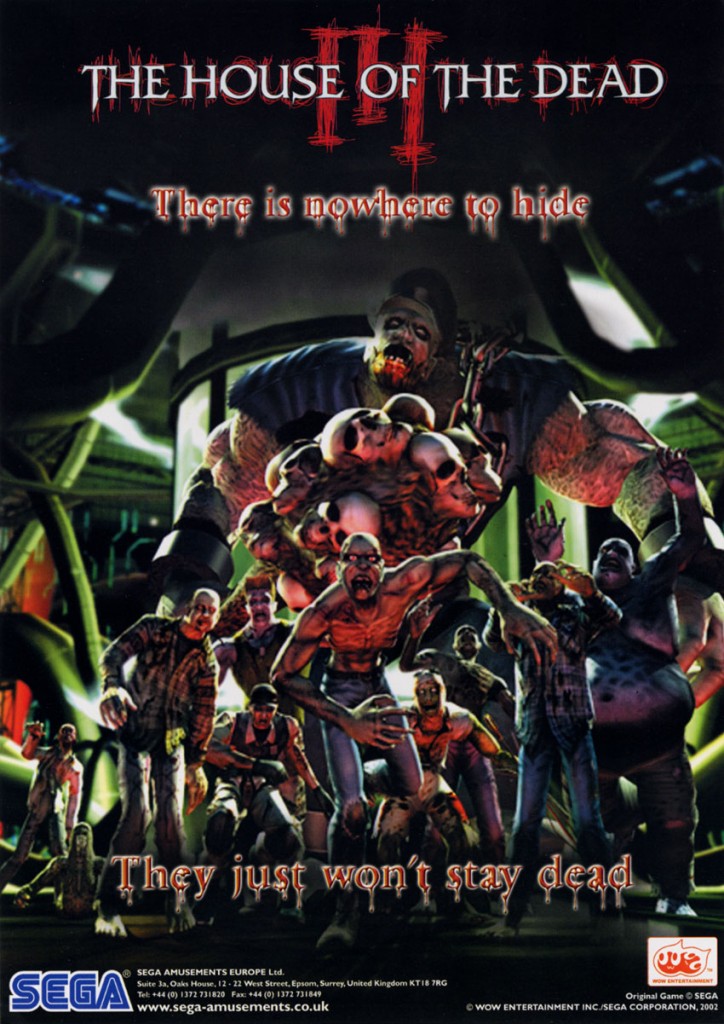
The House of the Dead III uses this arcade system with two realistic “pump action shotguns” Sega showed off. Unlike the original two, players must rescue each other from harm to earn health and points instead of saving civilians. The arcade version of HOTD III is also different from the console port of the game. In the attraction mode, the game will show the official artwork of The House of the Dead III. Seganaomi shows off a video of the start up boot.
Here another video of the prototype version of The House of the Dead III.
Forum has a new make over. TYPE OR DIE!
I took the time to redecorate the forum with the help from ShadiNeko, the webmaster of SegaBits. This forum was made for the fans of The House of The Dead franchise by Sega Corporation and to gather one big community together. Let’s show SEGA some love for HOTD franchise like Nightsintodreams.com and The Sonic Stadium did for Sonic and NiGHTS. Discuss anything on HOTD with other fans by sharing high scores, thoughts, fan work, etc. Don’t forget to leave feedback on the comments below. Also before joining the forums, don’t forget to read the rules on the Announcement Boards. Tell your friends and lets show SEGA we mean business! DOGS OF THE AMS! Time they made a move!
HOD Arcade History: Sega NAOMI

After the success of The House of the Dead on the Model 2 arcade board in 1996/97, AM1 went on to develop two games for Sega’s new arcade system called “NAOMI” (New Arcade Operation Machine Idea). A sequel and a spin-off title to The House of the Dead in 1998 (The House of the Dead 2 and Zombie Revenge). The “NAOMI” was basically a prototype of the Sega Dreamcast due to both systems having the same hardware. The Sega NAOMI has twice as much system memory, twice as much video memory, and 4X as much sound memory.
There is a key difference between NAOMI and Dreamcast lies in the game-media. The Dreamcast reads game data from GD-ROM optical disc, while the NAOMI arcade-board features 168 MB of solid-state ROMs or GD-ROMs using a custom DIMM board and GD-ROM drive. In operation, the Naomi GD-ROM is read only once at system powerup, downloading the disc’s contents to the DIMM-Board RAM. Once the download is complete, the game executes out of RAM, thereby reducing mechanical wear on the GD-ROM drive.

NAOMI Specifications CPU: Hitachi SH-4 CPU with graphic functions and 128-bit SIMD @ 200 MHz (360 MIPS and 1.4 GFLOPS) Graphic Engine: PowerVR 2 (PVR2DC) Sound Engine: ARM7 Yamaha AICA 45 MHz (with internal 32-bit RISC CPU, 64 channel ADPCM) Main Memory: 32 MByte Graphic Memory: 16 MByt
e Sound Memory: 8 MByte Media: ROM Board (maximum size of 172MBytes) / GD-ROM Simultaneous Number of Colors: Approx. 16,770,000 (24bits) Polygons: 5 Million polys/sec Rendering Speed: 500 M pixel/sec Additional Features: Bump Mapping, Fog, Alpha Blending, Mip-Mapping, Trilinear filtering, Anti-Aliasing, Environment mapping, and Specular Effects.
The “NAOMI” also ran other games licensed by other companies such as the one of the greatest fighting game of all time, Marvel vs. Capcom 2: New Age of Heroes.
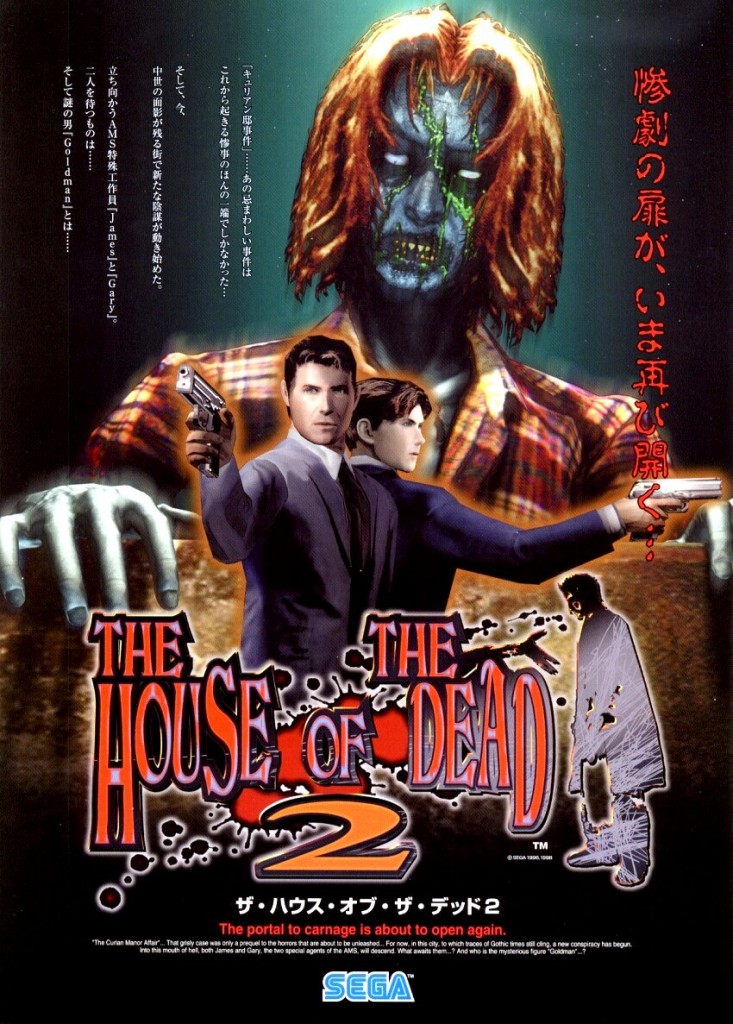
Moving along with HOD, here’s a little fact about The House of the Dead 2. The arcade version of the game on the Naomi system had more violence and a high extent of blood. The graphics were even more detailed than the Dreamcast version. Here’s a video of THOTD2 running on the NAOMI.
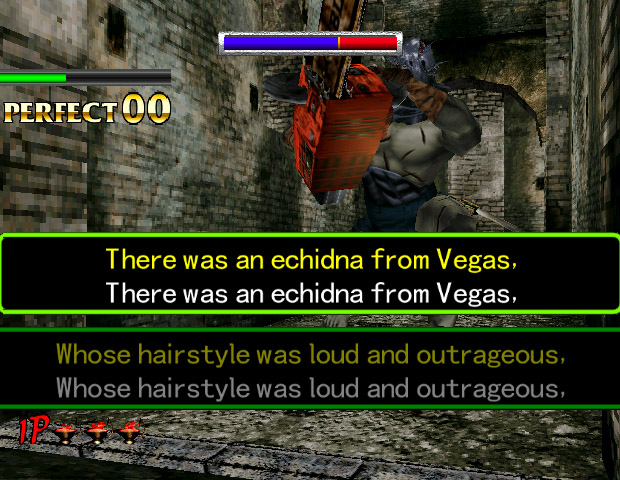
Another spinoff to HOD was also made for Naomi called “The Typing of the Dead” which is a parody to the 2nd game where players must type their way to survive. AM1 trolled us hard back then lol.
Afterwards, The House of the Dead 2 ended up as one of the most well known arcade game in the late 90’s. Spawning many spinoffs and definitely very well known for it’s bad voice acting. Suffer like G did?
Fans of the Dead: Gallery of Kate Green
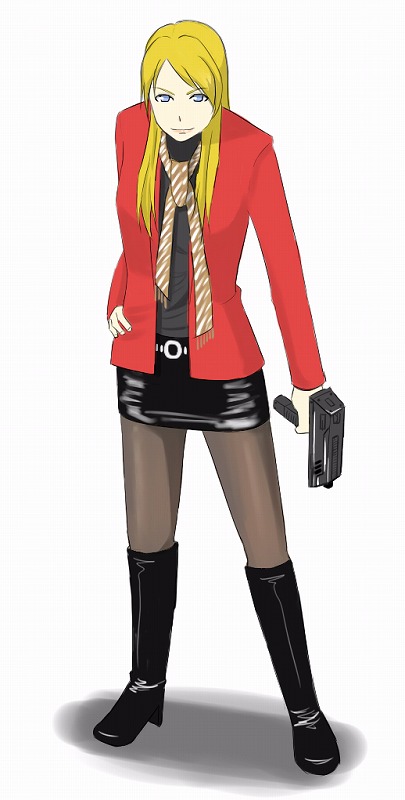
Kate Green, the newest AMS recruit and one tough lady when she’s behind the wheel. The House of the Dead 4 is a few days away from release. You all may know who Kate Green is when she was introduced in the HOD series back in 2005. In this edition of FotD, fans of HOD 4 shows some love for this sassy wise cracking AMS agent.
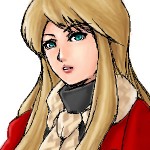
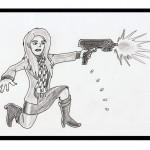
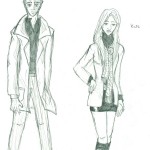

Kate: Your paying for my dry cleaning once we’re out of here.
Tips and Tricks for HOD4 Demo by Kori
Hello my AMS friends, I hope your enjoying The House of the Dead 4 Demo on your PS3 and prepping up your skills for the full game on April 17th. Today, I want to share my tips and tricks from my experience with the demo.
* Perfect Headshots: There are four headshot ratings ranging from “Good” to “Perfect” Your goal in the full version of the game is to get many perfect headshots as you can than the other ratings in order to obtain a good grade in the final result. A quick way to obtain them is to wait until a creature gets close and prepares to attack like the lab coated zombie for example. Be careful not to get hit or you’ll lose your perfect streak and that also goes for not aiming at their heads.
* Finding items: In the demo, you will be able to find items to increase your score. The items are contained in “Danger” panels, grey box containers, and yellow boxes attached to the wall by near opened slides.
* Alternate Path: There’s a moment where you are surrounded by a group of creatures and game will tell you to throw a grenade at them to clear some space. I recommend not using it for there is a red switch you can shoot in the far left. It will take to a new path to explore. Once you’ve pass the Mickey and labcoat creatures, you will encounter Zobio like creatures. Shoot the door on the left. Inside contains coins and a frog.
* A Secret Room: Before you enter the elevator hall towards the end of the demo, there are two slide doors. Throw a grenade to your right inside of it. After destroying the remaining creatures, you should be able to access the secret room containing 3 coins and a hat.
I hope these tips help you through the demo. Good Luck AMS Agents.
HOD Arcade History: Sega Model 2
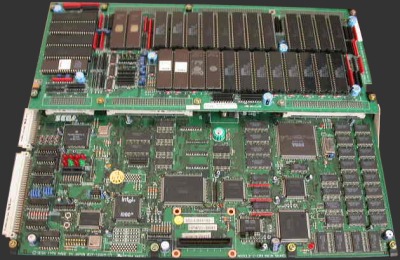
Ever wonder how gameplay and graphics in arcade video games were amazing back in the early mid 90’s? Sega had gotten that covered with there popular arcade board system, the Sega Model 2. The Sega Model 2 is an arcade system board released by Sega in 1993. Like the Model 1, it was developed in cooperation with Martin Marietta, and was a further advancement of the earlier Model 1 system. The most noticeable improvement was texture mapping, which enabled polygons to be painted with bitmap images, as opposed to the limited monotone flat shading that Model 1 supported.
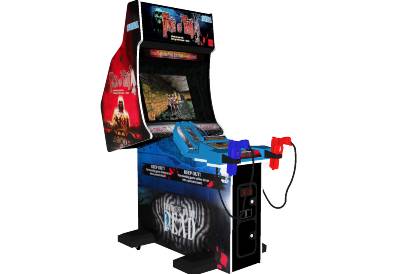
The Model 2 arcade system was very successful and featured some of the highest grossing arcade at its time such as The House of the Dead.
Hardware Description
Main CPU : Intel i960-KB @ 25 MHz 32bits RISC
Co-Processors : Fujitsu TGPx4 MB86235 FPU 32bits 16M flops
Co-Processor Abilities : Floating decimal point operation function, Axis rotation operation function, 3D matrix operation function.
Memory RAM : 8 M-Bits + 1 M-bit
Memory ROM : 720 M-bits (max.)
Video resolution : 496×384 24Hz Horizontal sync, wave, non interlace.
Scroll Surfaces : 2 Surfaces, Horizontal line scroll, 16 colours x 123 colour palettes / 32,768 colours
Window Surfaces : 2 Surfaces, Horizontal line scroll, 16 colours x 123 colour palettes / 32,768 colours
3D Graphics Engine : Built in floating decimal point unit.
900,000 vectors/sec (max.) 300,000 polygons/sec (max.)
Polygon Surfaces : (at least) 2,000,000 pixels/frame (60 frames/sec)
1,024 colour palettes x 64 luminance tables, 16,777,216 colours.
Texturing Information : Perspective Texture, 16 shade mono texture
Map size : 1024x2048x2 (sheets)
Micro Texture : 128x128x8 Sheets
Translator Map : 128 shades x 256 sets
Transparent 1 shade, checker board, texture antialiasing.
To demonstrate the hardware’s use, take a look at this playthrough of The House of the Dead.
Fans of the Dead: GO Kural! by Kori-Maru (Your’s truely)
I had this idea in my head all day yesterday. So, I decided to make a quick video of Fighting Ferret’s original art.
Video by Kori
Original art by Fighting Ferret

